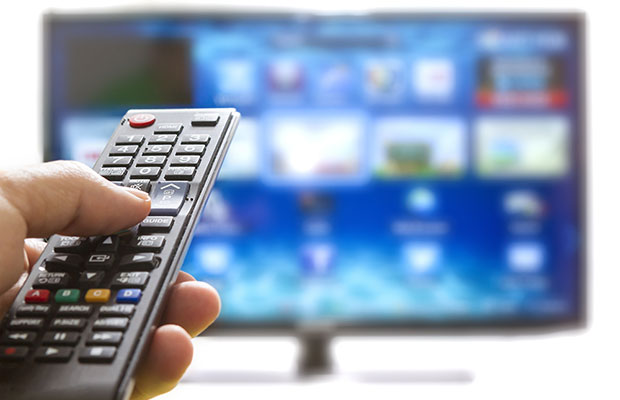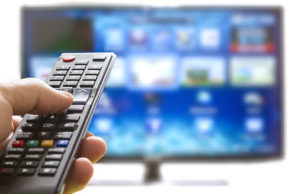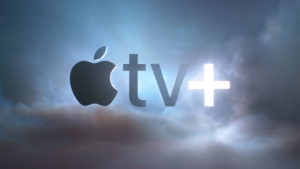Dish Network and Fox Corporation were able to come to terms last weekend, ending the blackout of Fox-owned-and-operated local stations, as well as FS1, FS2, BTN, Fox Soccer Plus, and Fox Deportes. The blackout of those channels, which began late last month, was notable for its timing. The fall college and professional seasons had just begun — as well as the new fall season of prime-time programming on Fox.
Dish is no stranger to disputes with content providers, and its feud with AT&T-owned HBO is nearing the one-year mark. The companies remain at an impasse that shows no signs of breaking.
In the case of the Fox dispute with Dish, there was much more at stake, and the National Football League became involved. That happened because Thursday Night Football is usually simulcast on the NFLNetwork in addition to being aired on the Fox network. The deal to end the blackout hinged on a much broader agreement between the pro football league and Fox Broadcasting.
For all intents and purposes, the NFL supported Fox and last week declined to make the simulcast available to Dish or Sling. That likely was enough to bring Fox and Dish back to the table.
Expect More Blackouts
The Dish/Fox showdown is far from the first and likely won’t be the last such squabble between pay-TV services and content providers. This past summer, a similar blackout occurred when CBS was removed from the AT&T-owned DirecTV satellite service.
Dish may have resolved its standoff with Fox, but it is still feuding with former Fox regional sports networks that are owned by SinclairBroadcast Group — and Dish’s blackout of HBO meant it didn’t-carry the recent final season of Game of Thrones.
In addition, Dish, Comcast, and DirecTV are still involved in a dispute with Altitude Sports, which impacts sports fans in the Denver market.
At the heart of the battle are “re-transmission” fees, which pay-TV services must pay to the broadcast content providers to carry those channels — even if the channel is available for free over the air, as in the case of the Fox Network.
Passing the Blame
Whenever blackouts have occurred, both sides have pointed to the other as being the responsible party, but of course, the consumer is the one who is left without a way to see the content.
“This is the defense of Dish in the most recent feud with Fox,” said Greg Ireland, research director for consumer digital transformation and multiscreen video at IDC.
“However, they are very much damned if they do, damned if they don’t –as content providers are looking for more money, and that could mean higher prices,” he told the E-Commerce Times.
“One can certainly debate who is playing the victim,” said TammyParker, senior analyst for global telecom consumer services at GlobalData.
“This past weekend in Denver, I heard a radio ad from Altitude, which proclaimed that Dish, DirecTV, and Comcast were intentionally blocking it and asked sports fans to call their provider and demand that Altitude be returned to the channel lineup,” she told the E-Commerce Times.
“The ad didn’t mention that Altitude is reportedly demanding to be paid more for its content, a cost that could be passed down to subscribers,” Parker noted. “Altitude also issued a press release today that echoes what was said in the ad and asks that sports fans’ call for an end to this terrible power play by these three domineering conglomerates.’ Talk about claiming victimhood!”
The View From the Carriers
The carriers do have a point — especially when it involves local broadcast stations, which in the 1980s wanted to be carried by cable companies. Now instead of asking or demanding to be carried, these stations want to be paid retransmission fees.
At the same time, the pay-TV services are dealing with cord-cutters and increasingly “cord nevers” — younger consumers who never subscribed to a traditional pay-TV service in the first place.
“From the perspective of MVPDs (multichannel video programming distributors), it’s getting more and more challenging to justify paying rising content carriage fees as their pay-TV customer bases continue to shrink,” said Parker.
“With increased competition from over-the-top (OTT) players, it could be getting increasingly risky to pass on higher prices to consumers, though admittedly pay-TV operators have gotten away with raising subscription prices, including adding questionable fees, for many years,” she added.
Falling subscriber numbers and new competitive challenges from direct-to-consumer streaming products have traditional pay-TV operators justifiably concerned about their business models.
“It’s not surprising to see them standing more firm than they may have in the past when it comes to carriage renegotiations, especially if content providers are seeking significant fee increases,” said Parker.
“[As Dish CEO] Charlie Ergen noted during Dish’s Q1 2019 earnings call,” she recalled, “‘You can’t have double-digit declines in viewership and have 6 percent, 7 percent, 8 percent increases in pricing when customers are watching less. That’s just not sustainable, and some people are asking for more increases than that.'”
NFL to the Rescue
In the latest showdown, the NFL played a crucial role in getting the two sides to the table.
“It is important to recognize that feuds are often resolved differently depending on the type of content,” said Dan Cryan, principal analyst for video at MTM London.
The NFL had a lot at stake, and professional football is already facing backlashes over player injuries, high salaries, and controversial statements made by some players. What the league didn’t need was more controversy, and hence it helped broker a deal.
It is a truly unique situation, however.
“Where you have the NFL stepping in to preserve the position of football is something you don’t see from the Director’s Guild of America to preserve shows and movies,” Cryan told the E-Commerce Times.
“However, the NFL exists in a mixed economy, and the clubs’ income is impacted if the audience diminishes — which is something different than what producers of TV and movies face,” he added.
Live sports is a different beast, of course, because the value is really only there until the game is over. Prime-time programming and movies can still be seen after the first viewing.
“It is part of a double phenomenon: The first is that live sports are fantastically important for the consumer,” said Crayn. Also, “the clubs make advertising revenue from in-arena sponsorships.”
This is why retaining access to live sports is so important.
One irony is that the cost of those live sporting events is also what brought about the feud. The rising costs — from new stadiums to player salaries — are passed down, eventually, to the consumer.
“Dish is who the consumer is ultimately mad with,” explained IDC’s Ireland.
“The consumer isn’t angry at the programmer or even the actors and producers when the cost of HBO goes up, as it is the service provider who is sending out the bill,” he noted.
“This is where Dish was fighting in essence for the consumer,” said Ireland, “but even then, they are running a business — and as Wall Street would argue, the primary responsibility for Dish or any carrier is to its shareholders.”
Lasting Effects
Dish and Fox were able to come to an agreement after just a week and a half, but its other feuds — notably with Univision — lasted longer, and the HBO battle is still ongoing. Here is where Dish is stressing that it is fighting those rising costs.
“Dish has long been considered a tough bargainer, but the sustainability aspect is important, as carriage fee negotiations often involve multiyear contracts,” noted Parker.
“Even if certain price points seem reasonable today, ongoing changes to the linear TV business are such that pay-TV providers should be cautious about agreeing to contracts that might not make as much sense in the near future,” she explained.
Effective PR is necessary to mitigate that damage, which is why Fox andAltitude each launched carefully crafted ad blitzes aimed at consumers.
Even when an agreement is reached, and the various parties are friends again, the damage could be lasting.
“Any of these content outages create immediate challenges that are greater for the pay-TV provider,” said MTM London’s Cryan.
“Charm offensives are par for the course — that it was the other side’s fault –, but none of this really matters to the viewer,” he added.
However, viewers can be quick to forget about the feuds once the service is restored.
“Most blackouts have little negative impact as they are short-term, such as the blackout of Fox on Dish, which lasted less than two weeks before the two announced a new multiyear contract today,” said GlobalData’s Parker.
“However, longtime blackouts do end up harming the individual pay-TVservices that are involved because they make those services less competitive and also diminish customer loyalty,” she added. “Dish has acknowledged that the Univision blackout, which was finally resolved, was ‘painful’ and that it has continued facing headwinds due to not carrying HBO.”
Could Greater Competition Help?
In the case of the Dish feud with HBO, most subscribers have been able to get the pay-TV channel via streaming. In fact, today, consumers can get video content from a plethora of services, and in most markets, there is rarely a single option, even for pay-TV services.
“Blackouts harm subscribers if they are locked into long-term contracts that they cannot get out of,” said Parker.
“Others, however, are usually free to find another provider, and those in metropolitan areas generally have a choice of pay-TV operators, though customers in rural and remote areas may have limited options,” she noted.
For those in rural markets, blackouts can be far more impactful.
“This is why blackouts do hurt the carriers more,” said Patrick Hedger, research fellow at the Competitive Enterprise Institute’s Center for Technology and Innovation.
“Ultimately, we want to see an environment where this is better for the consumer, and so people don’t feel like they’re stuck with one carrier,” he told the E-Commerce Times.
“What we see in these feuds is the testing of the limits by the carriers and content providers,” said Hedger. “It is up to the consumer to vote with their pocketbook.”
Changing Business Strategy
Because of the changing landscape in the way that viewers can get content, many of the service providers are already pivoting away from being a pay-TV service exclusively. Comcast is just as focused on its broadband delivery — clearly seeing a future when OTT could replaceable.
AT&T and other carriers have been making similar transitions, and even Dish could transform from a satellite player to a mobile operator in the years to come. What is certainly true is that the legacy business model will have to evolve, or else these companies could be one feud away from losing too many customers.
“Pay-TV is not a particularly good business to be in right now, as we have content sharing and cord cutting, and streaming is a real game-changer,” said Ireland. “A lot of these companies exist in a multifaceted environment, and the rising costs are making the core business less attractive.”

























































Social Media
See all Social Media